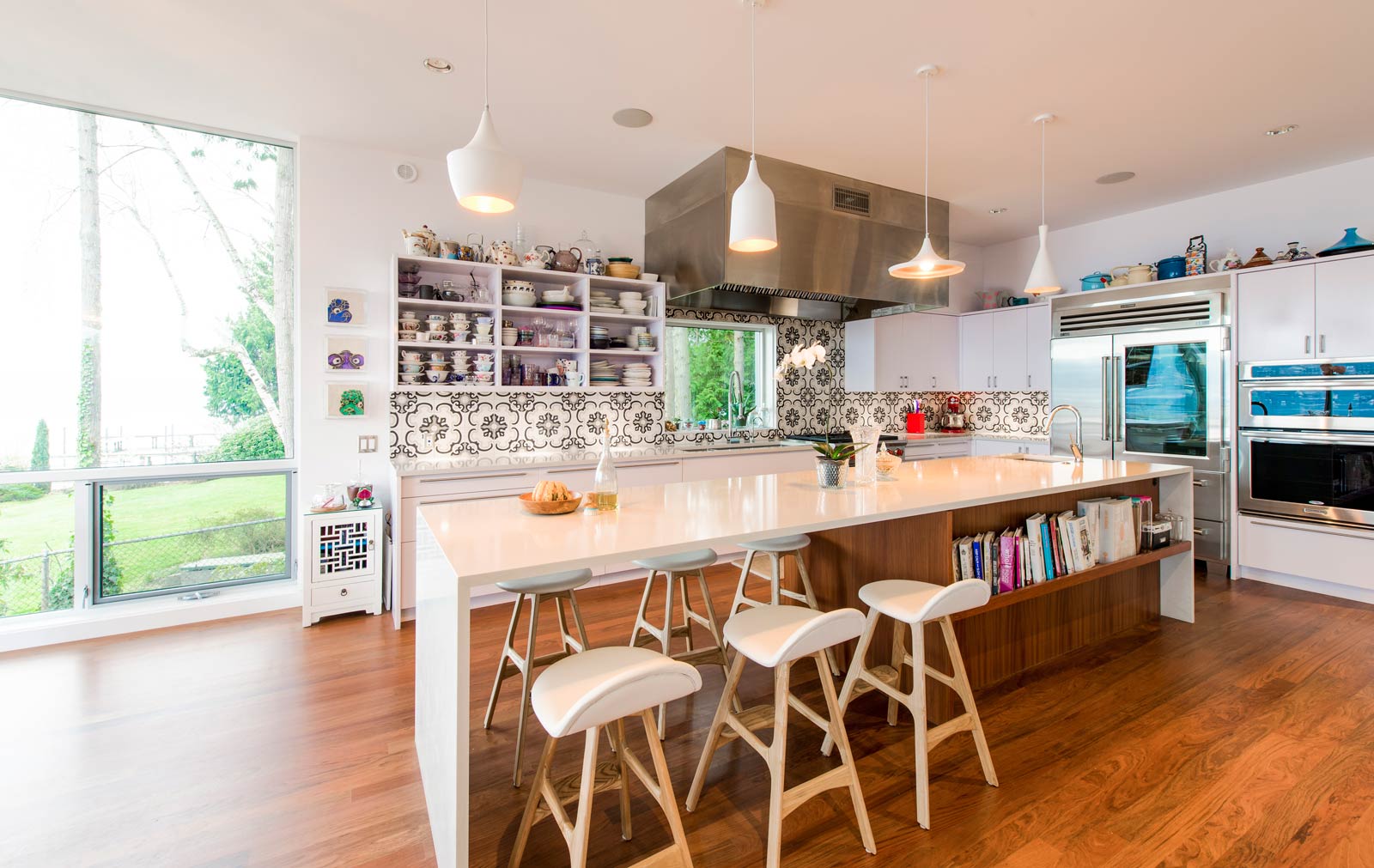
[All photos by BUILD LLC]
More than ever, modern residential design incorporates entertaining and gathering space within the kitchen area. In order to accommodate family and guests, in addition to the chef, the kitchen island has taken a leading role in kitchen design. An island is also a convenient location in which to tuck some of the amenities expected in the modern home. With steam ovens, speed ovens, warming drawers, and wine refrigerators all competing for prime space in the kitchen, an extra bank of cabinets is valuable real estate. At the same time, the function of a kitchen island is also a balancing act, and the appliances shouldn’t conflict with seating for guests and serving space for the charcuterie plate. Because the island is able to play a variety of roles in the kitchen, it has become a strategic design piece in our residential projects.
We’ve combed through the BUILD archives to identify 10 kitchen island strategies that have become our back pocket references for current and future residential work, and it’s become a powerful enough library that it’s worth sharing. Each example lists the critical design considerations as well as dimensions and materials.
Concept: Storage & Workspace
Project: Magnolia Residence
Dimensions: 12’-0” long x 3’-4” deep x 3’-0” tall
Materials: Quarter-sawn walnut veneer cabinets with Blum hardware, Dekkor 18000 Wide Pedestal D series pulls, and Kashmir White granite countertops.
Description: Covering the basics, this kitchen island provides generous storage and keeps the countertop clear of appliances for plenty of preparation and serving space
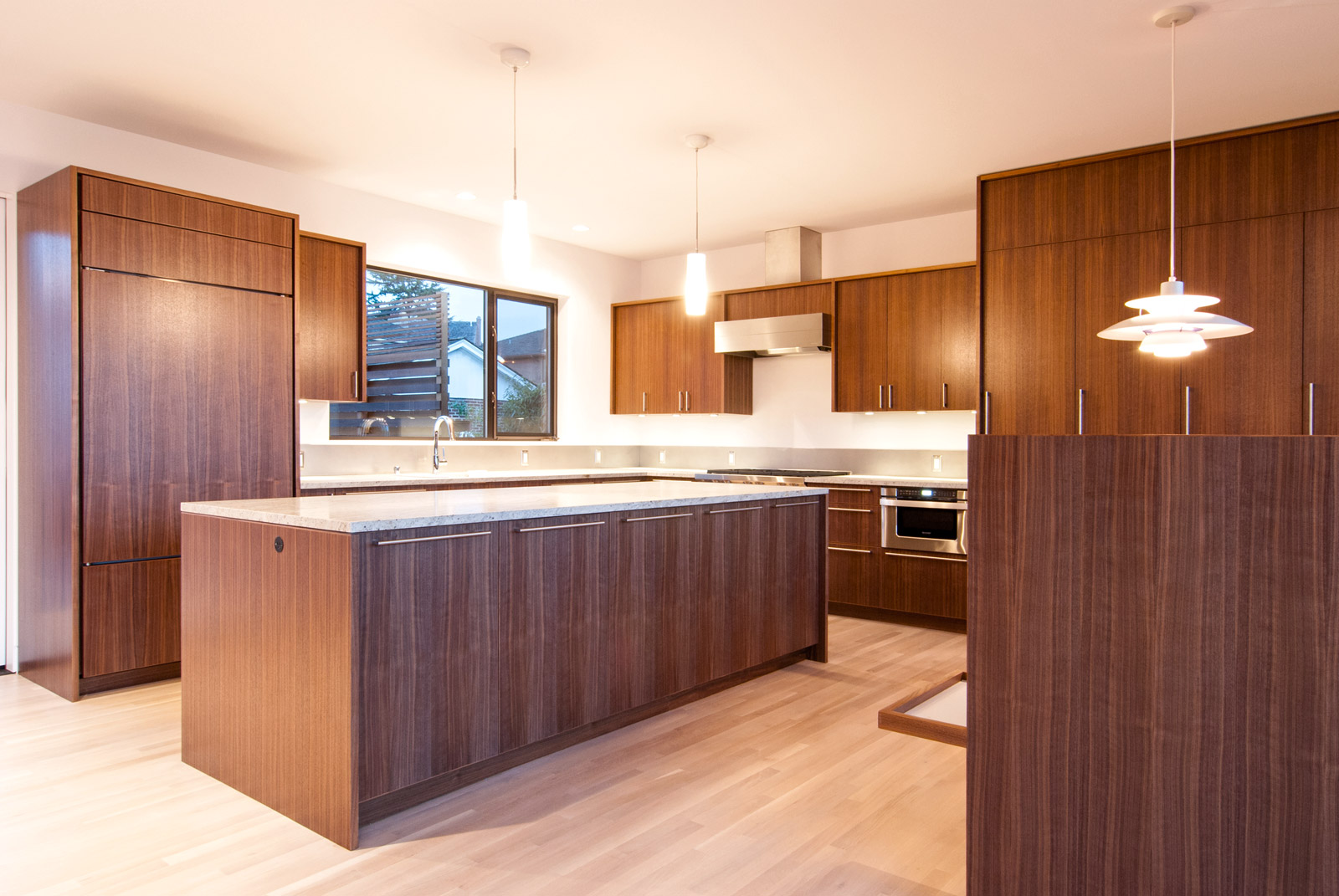
Concept: Island Cooktop
Project: West Seattle MCM
Dimensions: 10’-10” long x 3’-2” deep x 3’-0” tall
Materials: Quarter-sawn walnut veneer cabinets with Blum hardware, Dekkor 18000 Wide Pedestal D series pulls, and Pentalquartz Cascade White countertops.
Description: It’s tempting to locate the cooktop on the kitchen island as it allows continuous upper cabinets to occupy the kitchen perimeter. The success of this strategy typically depends on 3 primary factors: Will the cooktop hood block a significant view? Will the cooktop hood become too much of a visual distraction within the kitchen? And are there tall ceilings at the kitchen? If the answer to any of these questions is “yes,” it’s a strategy best avoided. Otherwise it makes for a functional kitchen design with a tight work triangle.
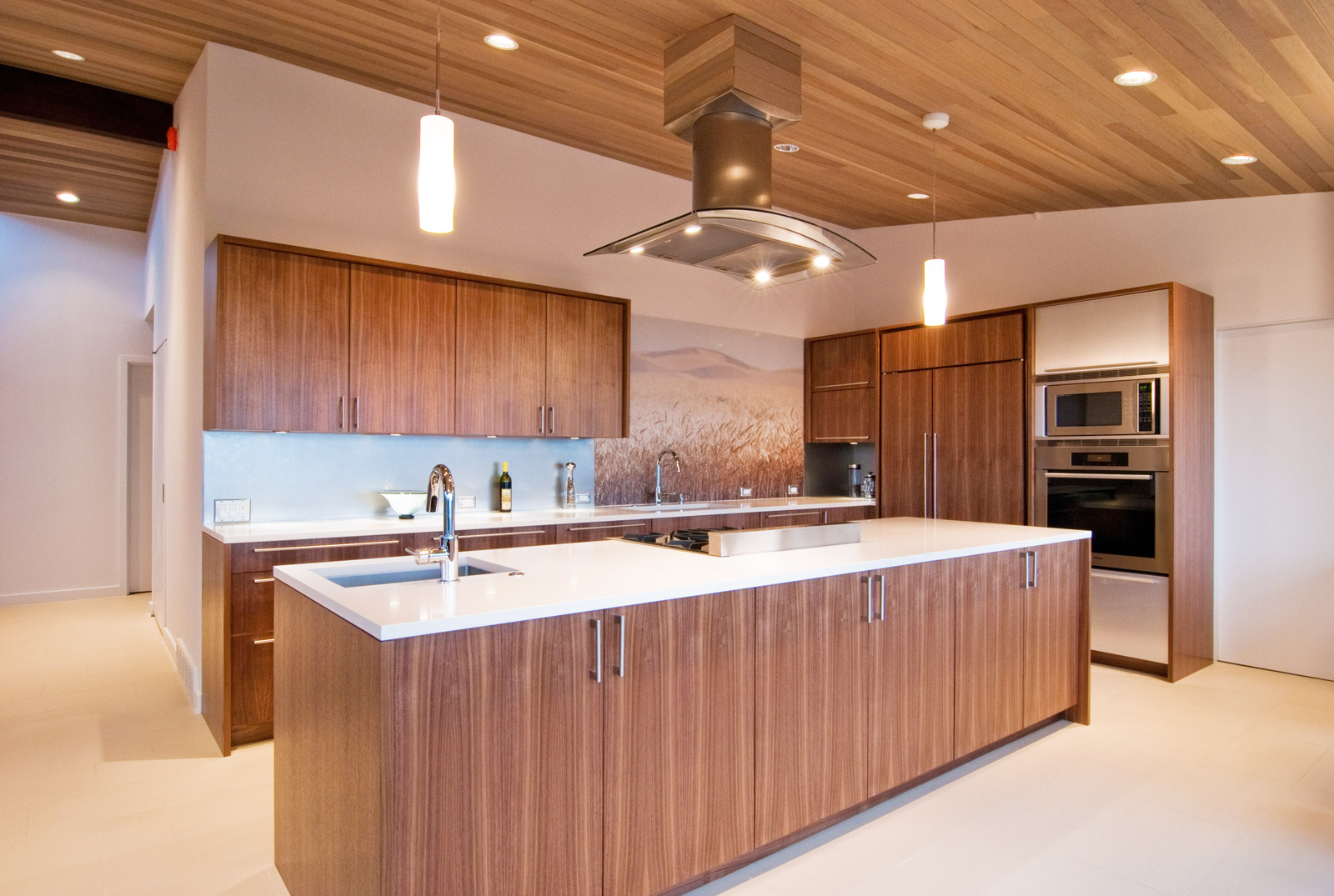
Concept: Appliance Island
Project: Davidson Residence
Dimensions: 9’-6” long x 3’-4” deep x 3’-0” tall
Materials: Wenge veneer cabinets with Blum hardware, Linnea pulls, and Chroma white countertops.
Description: Where kitchen wall space is limited or full storage space is desired, congregating multiple appliances on the island can ease up the design game of Kitchen Tetris. This example gathers all the cooking appliances together into a common area of the island, freeing up the back cabinetry wall from appliances which would be circuitous to access.
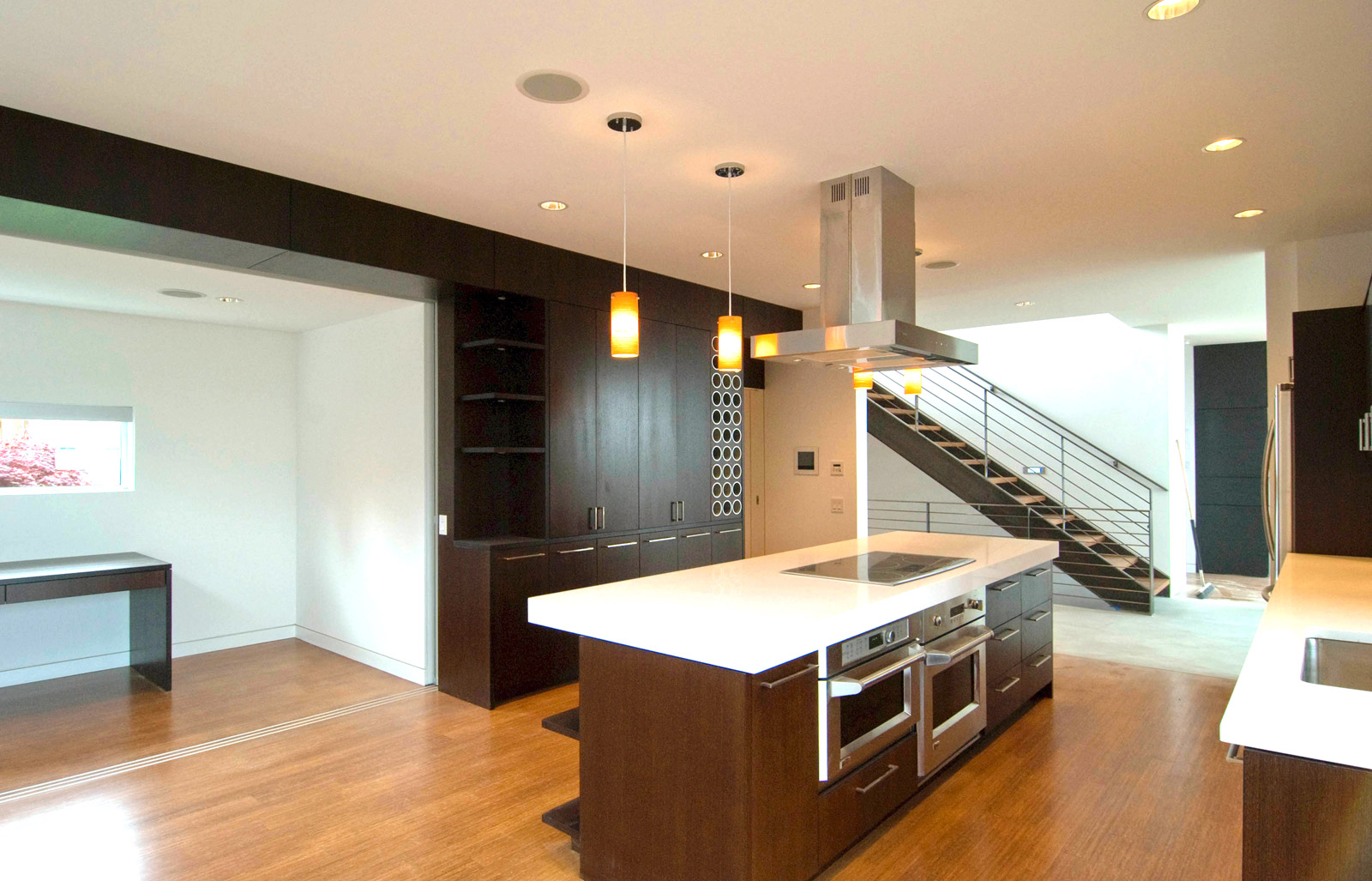
Concept: Island Sink
Project: Case Study House
Dimensions: 9’-11” long x 3’-2” deep x 3’-0” tall
Materials: Non-figured quarter-sawn anigre veneer cabinets with figured Russian birch (at back of island), Blum hardware, custom stainless pulls, Pentalquartz Mesa Polished countertops, and custom stainless steel sink.
Description: Placing the sink on the kitchen island is a tactical move that establishes the kitchen island as the focus of the room. Along with the sink, follows the food preparation, drink mixing and eventual cleanup. All of these functions need to occur in harmony with entertaining, serving appetizers, and adding a dash of bitters to the round of Manhattans. This strategy keeps the cooktop and hood on a perimeter wall which better contains smoke and cooking odors. It also affords the chef a better view of the party.
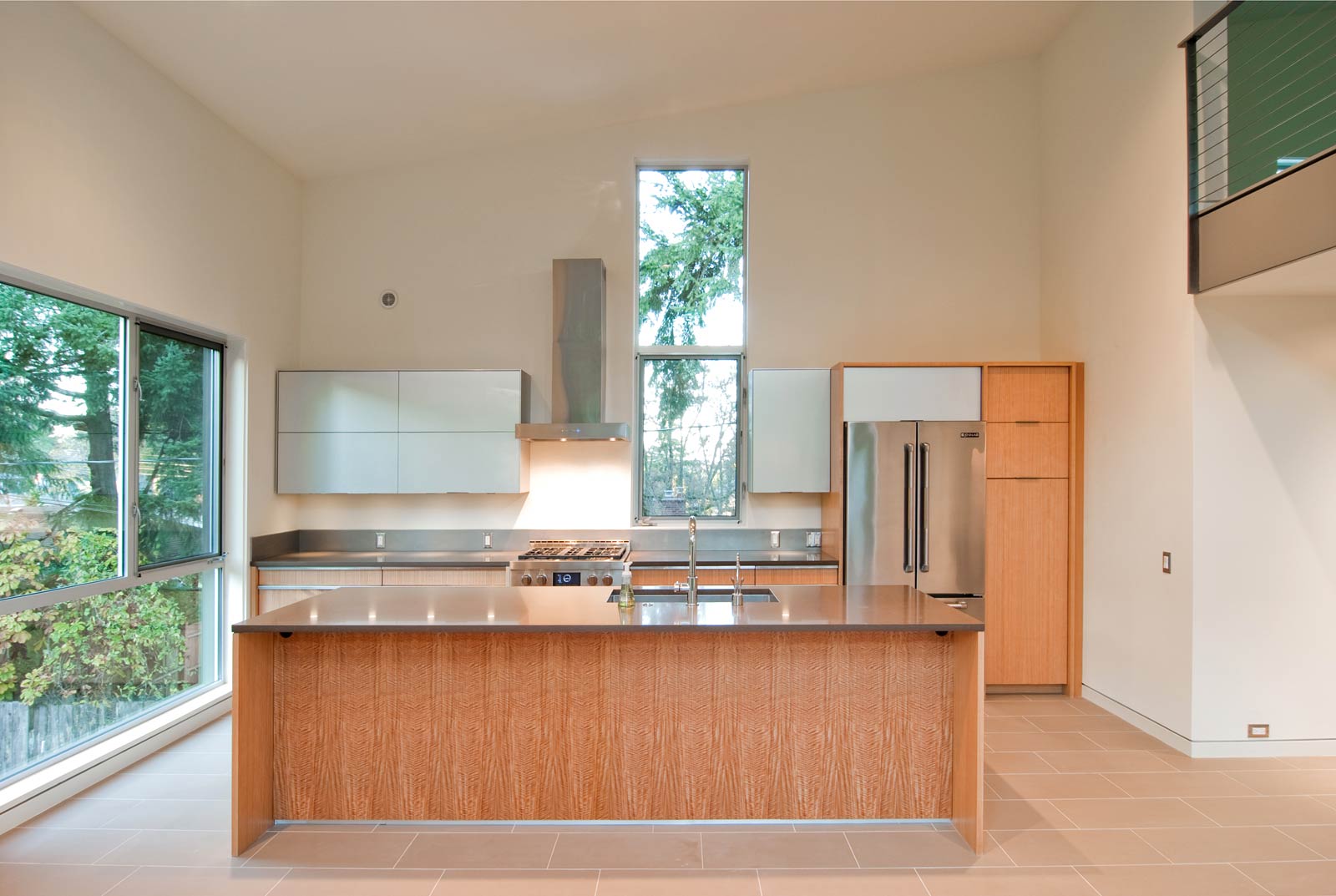
Concept: Island Bar Sink
Project: Madison Park Residence
Dimensions: 12’-0” long x 3’-2” deep x 3’-0” tall
Materials: Beech veneer cabinets with espresso stain, Canyon Creek hardware, Dekkor 18000 Wide Pedestal D series pulls, and Pentalquartz Cascade White countertops
Description: Keeping the main kitchen sink at the perimeter countertop and locating a bar sink at the kitchen island keeps a nice separation between the food prep area and the serving/entertaining area. Because there is less competition for the primary kitchen sink, this arrangement allows the sous-chef to be more effective. The smaller sink enhances the bar function of the island and it’s also a great place to locate the instant hot water / filtered water tap.
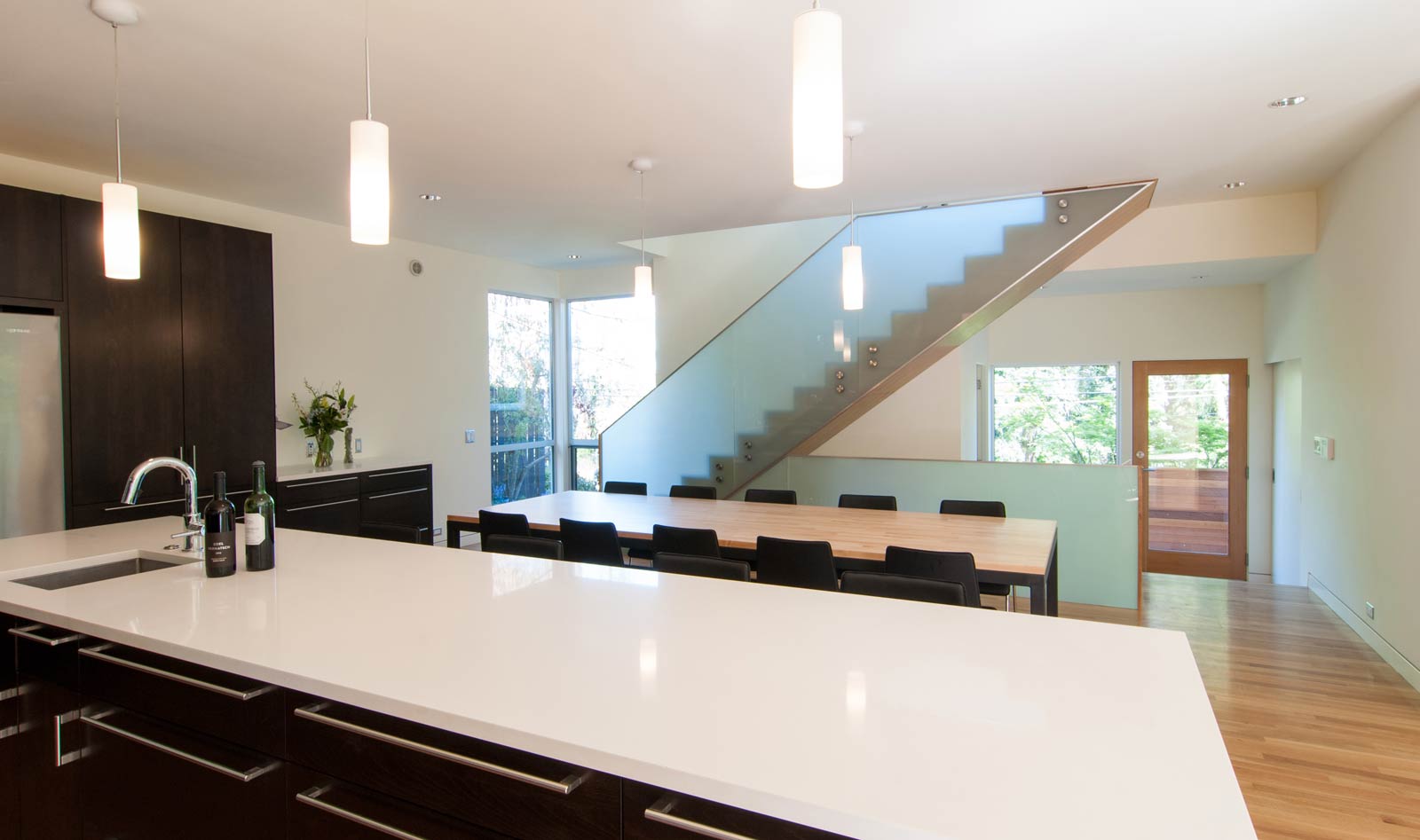
Concept: Open Island
Project: Innis Arden North
Dimensions: 8’-3” long x 3’-4” deep x 3’-0” tall
Materials: Gunmetal laminate on Europly with Blum hardware, Dekkor 18000 Wide Pedestal D series pulls, and Pentalquartz Pearl White countertop and side panel
Description: Where the massing of the island might be too visually heavy, the island is opened up below. This helps the room breathe a bit, it shows off the floors, and allows the flexibility of seating if the homeowners desire. It also creates a good opportunity to visually fold the counter top material down to the floor as side panels of the island.
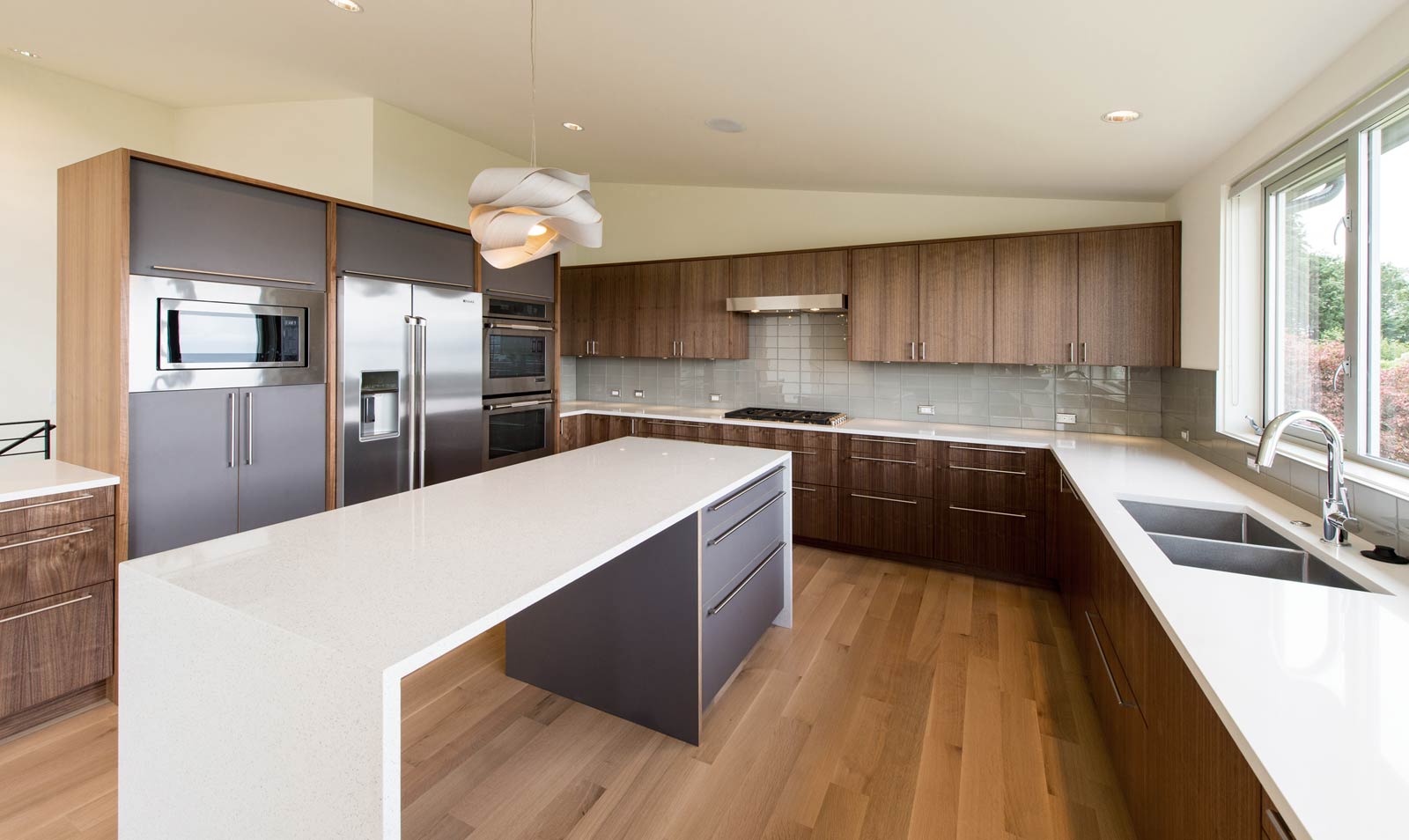
Concept: Bar Seating
Project: View Ridge MCM
Dimensions: 6’-5” long x 3’-2” deep x 3’-0” tall
Materials: Quarter-sawn walnut veneer cabinets with Blum hardware, Dekkor 18000 Wide Pedestal D series pulls, and Pentalquartz Cascade White countertops.
Description: This kitchen island strategy sacrifices shallow storage on the opposite side of the kitchen for bar seating. It brings focus to the cooking area and should be used for chefs that don’t mind providing a bit of entertainment along with the food prep. The seating doesn’t affect typical island dimensions and offers about 12” of legroom below the countertop. It can easily be combined with open display space as shown.
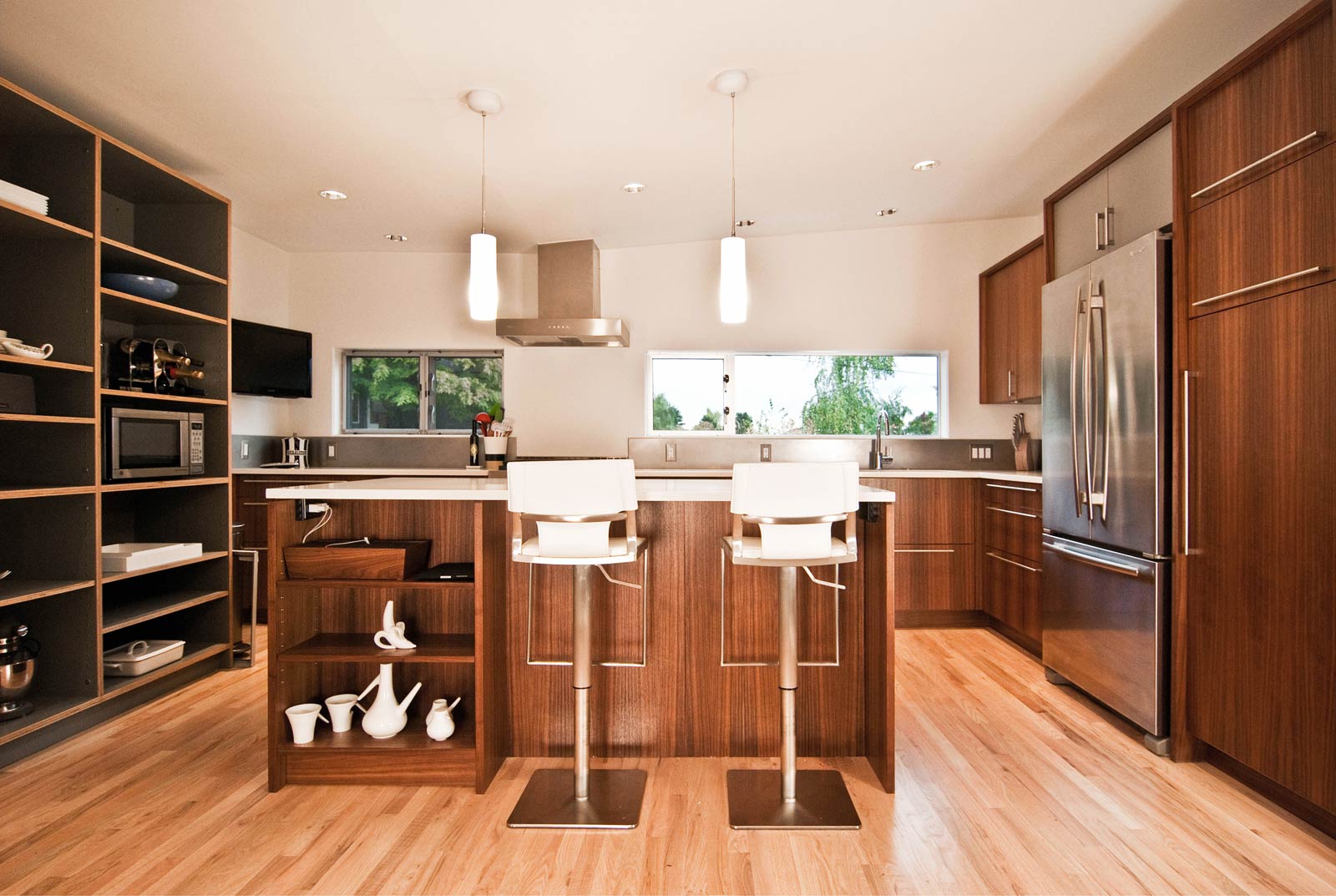
Concept: Informal Dining
Project: Beaux Arts Village
Dimensions: 11’-2” long x 3’-4” x 3’-0” tall
Materials: Anigre and gray laminate with Blum hardware, Sugatsune 1600 series pulls, and Pentalquartz Mesa polished countertops.
Description: Where more informal or family eating may take place on a regular basis, it’s nice to have opposing chairs. This typically entails a minimum four foot extension of the kitchen island to accommodate 2 chairs on each side. In this case, the countertop is brought out and held at the far end with an attenuated aluminum frame.

Concept: Island Cantilever
Project: Innis Arden Remodel
Dimensions: 12’-1” long x 3’-2” deep x 3’-0” tall
Materials: Quarter-sawn walnut veneer cabinets with Blum hardware, Sugatsune 16 series pulls, and 3cm thick Kashmir White granite countertops.
Description: Where a high flexibility of seating around the kitchen island is key, the countertop is cantilevered with the help of inconspicuous steel brackets below. This allows bar seating on 3 sides and better opportunities for work space. In the example below, the kitchen countertop is used by the home owners as the hub of the house. It’s where you can keep an eye on the kids, manage the kitchen, work on your laptop, and pop open a bottle of wine –all from the same spot.

Concept: Display space
Project: Lake Washington Residence
Dimensions: 15’-0” long x 3’-4” deep x 3’-0” tall
Materials: Brazilian cherry veneer (to match floor) with Blum hardware, Dekkor 18000 Wide Pedestal D series pulls, and extra thick Perla Venata granite countertops wrapped to floor
Description: Along with the gastronomic savvy kitchen, comes the prerequisite list of gorgeous culinary books –many of which are too beautiful to be tucked away on densely packed bookshelves. A simple 6” ledge allows the showpiece books to be displayed, all within easy grasp of the chef.
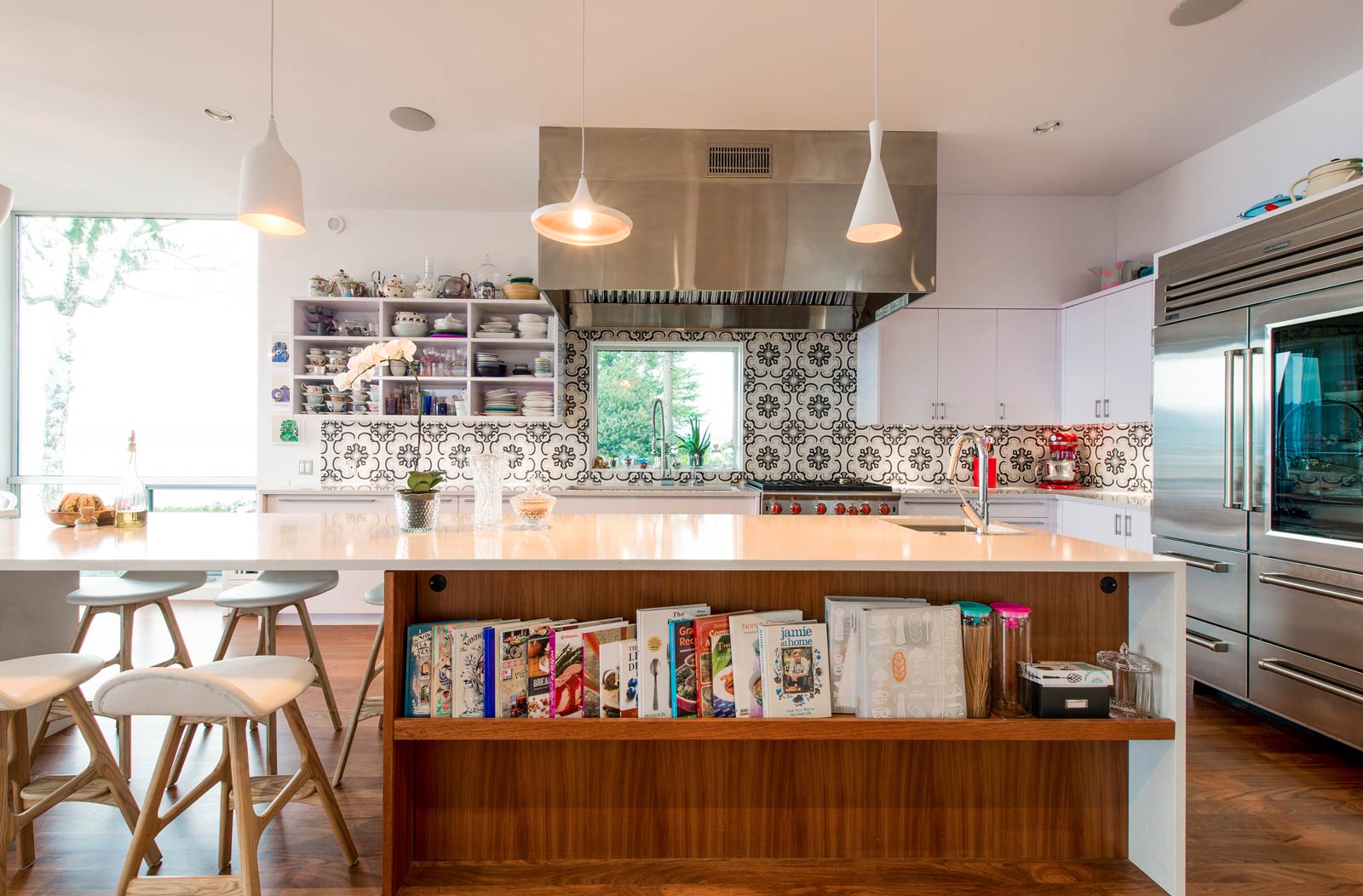
While there are many successful combinations to discover between these examples, they represent the basic DNA of BUILD’s kitchen island lifestyle.
Cheers from Team BUILD





